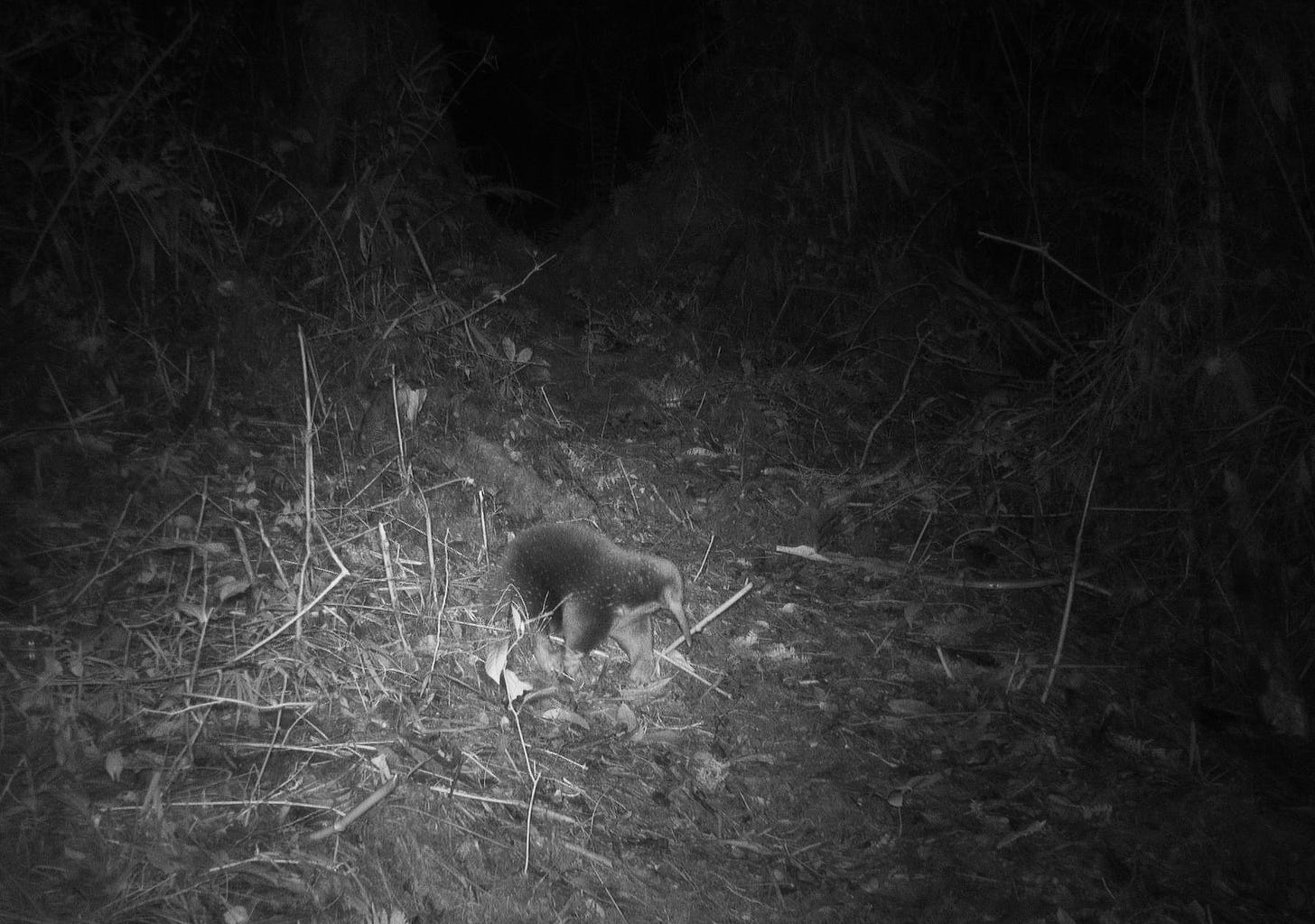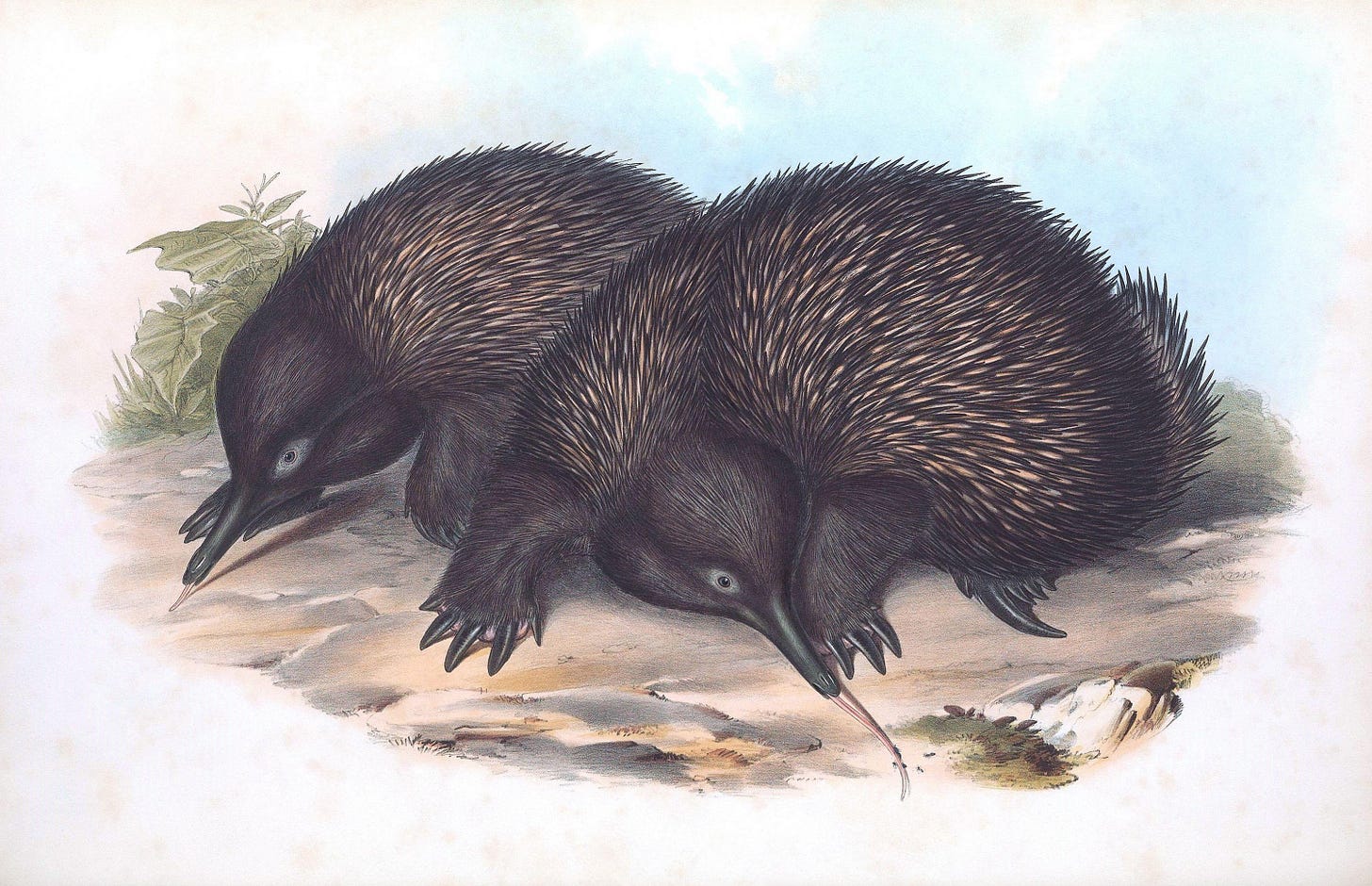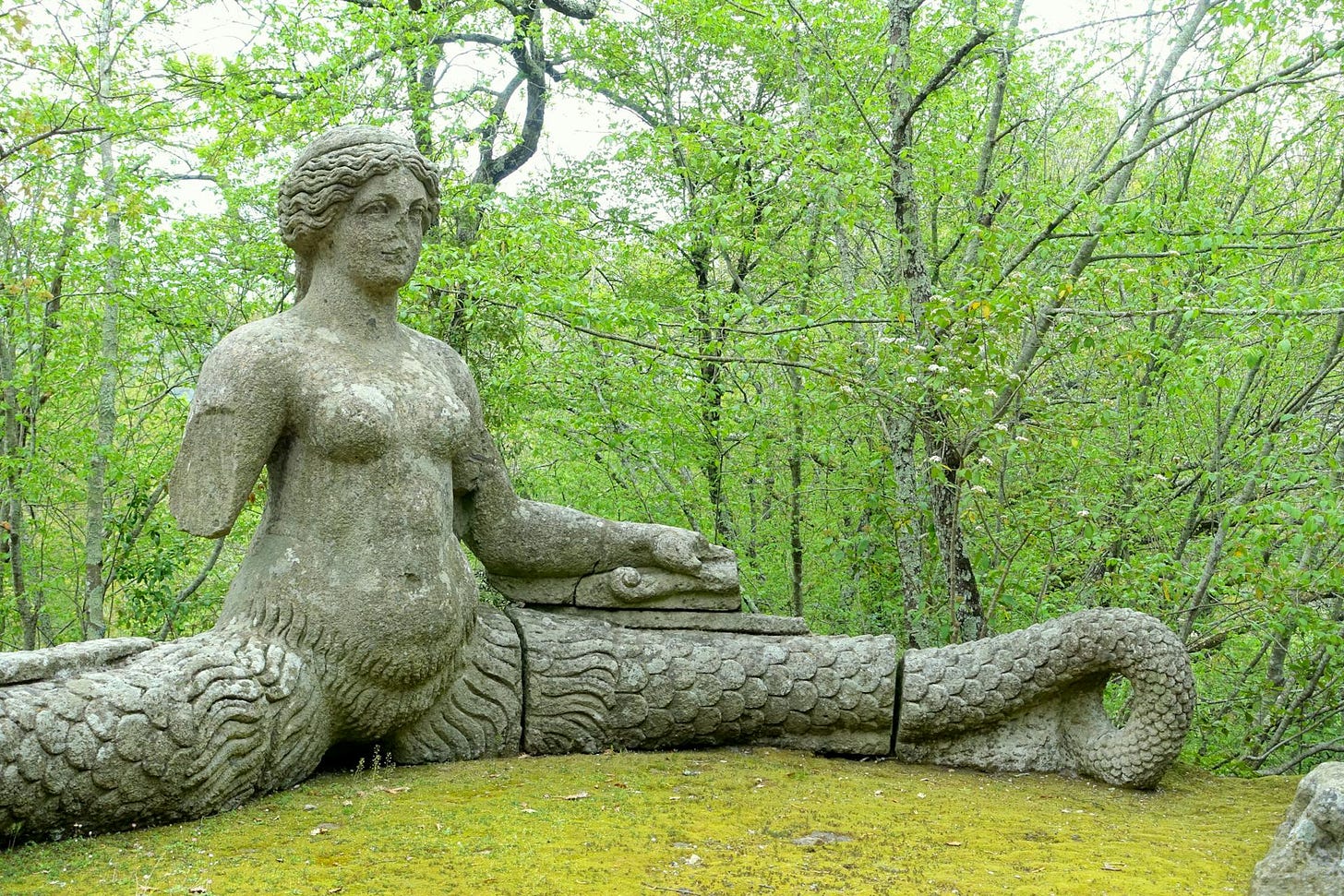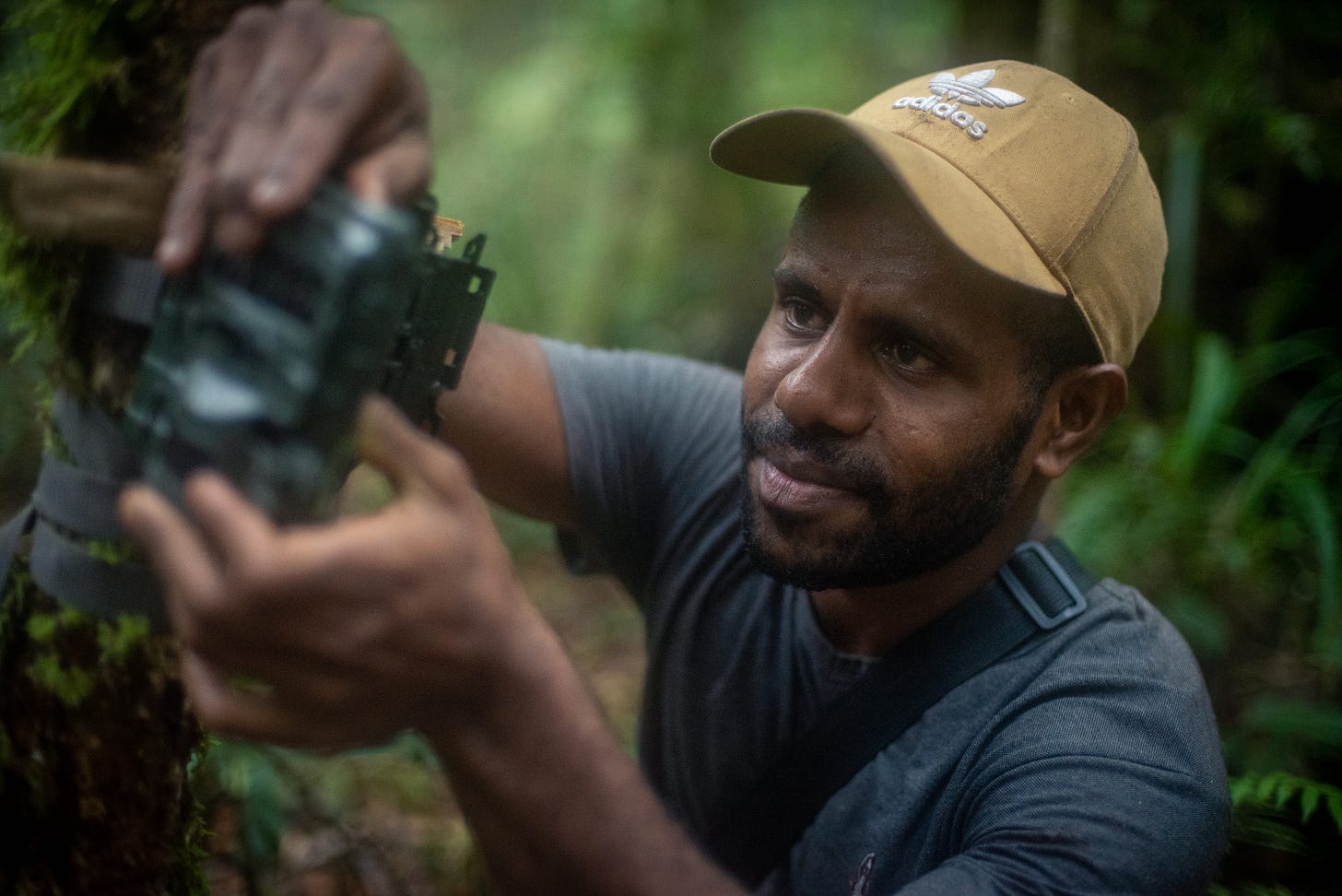Myth, monotremes and the Cyclops Mountains
What lays eggs, uses electrolocation and has a four-pronged penis?
As the dust settles on the media frenzy surrounding our rediscovery of Attenborough’s ‘lost’ echidna, we want to share more about this extraordinary mammal and how we rediscovered it.
This is just the beginning of years of research, training and conservation in the Cyclops Mountains. Help us by signing up for a paid subscription!
Each regular subscription pays for an extra day of field research, and Echidna Superfan subscriptions fund a Papuan student's training in biodiversity survey methods, such as camera trapping.
Before Expedition Cyclops, we knew of only four monotreme species that survived to the modern-day — the duck-billed platypus, the short-beaked echidna, the eastern long-beaked echidna, and the western long-beaked echidna. These egg-laying mammals split from the rest of the mammal tree of life some 200 million years ago.

The rediscovery of Attenborough’s long-beaked echidna is so important because it means there is one more survivor that protects the unique and fragile history of the egg-laying mammal lineage (the monotremes) that, if it were to go extinct, would be a great tragedy.
Monotremes are profoundly different from other mammals because their lineage has evolved independently of their marsupial (e.g. the kangaroos, wombats, and Tasmanian devils) and placental (e.g. giraffes, bears, and humans) cousins since the Jurassic.

In ancient Greek mythology, the Echidna is a hybrid creature, part serpent, part woman, and this, in part, explains the origins of the spiny anteater’s more commonly used name. Echidna are not hybrids of other mammals but have evolved independently of them for hundreds of millions of years. This is reflected in some of their bizarre characteristics — they lay eggs, females have only a single opening for their urinary, defecatory, and reproductive systems (the cloaca), they do not possess nipples, they use electrolocation, and male echidna have a four-pronged penis.

In the Tepera language spoken by the customary landowners of the Cyclops, the echidna is known as ‘payangko’. It has played a significant role in their culture, acting as a means to resolve conflicts between clans. One clan would be tasked with finding an echidna in the mountains, the other with catching a marlin in the ocean. The efforts to find these elusive creatures could take decades, which would distract from the conflict and unite formerly fighting people in a shared quest.
Unfortunately, there are significant threats to the monotreme lineage. Attenborough’s long-beaked echidna remains ‘Critically Endangered’ on the IUCN Red List, as does the western long-beaked echidna; the eastern long-beaked echidna is listed as ‘Vulnerable’, and the duck-billed platypus as ‘Near Threatened.’ Attenborough’s long-beaked echidna was, for many years, listed as the Zoological Society of London’s number one EDGE (Evolutionary Distinct and Globally Endangered) species, making it the species of greatest conservation concern in the world.
The team of Expedition Cyclops rediscovered Attenborough’s long-beaked echidna on the final images of the final SD card they collected from the final day of their final ascent of the mountains. Indeed, this fifth ascent was never planned and was a last-ditch effort by James Kempton, Gison Morib, and Ruben Penggu to find the echidna after weeks of fruitless searching.

Despite our rediscovery of Attenborough’s ‘lost’ echidna, there is still so much we do not know about it. We do not know how many are left; we do not know their distribution in the Cyclops Mountains; we know almost nothing about their basic biology. If we are to conserve Attenborough’s long-beaked echidna and their Cyclops Mountains home, this is essential information, and your support directly enables this.
Though the rediscovery represents the highlight of Expedition Cyclops, we made so many other discoveries. In upcoming posts, we want to share these with you, as well as stories from the expedition itself and stories of the different people and institutions that made this work possible.


